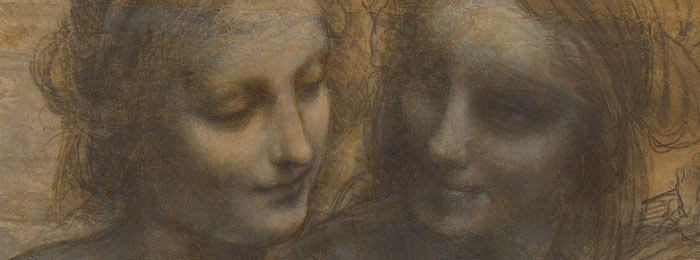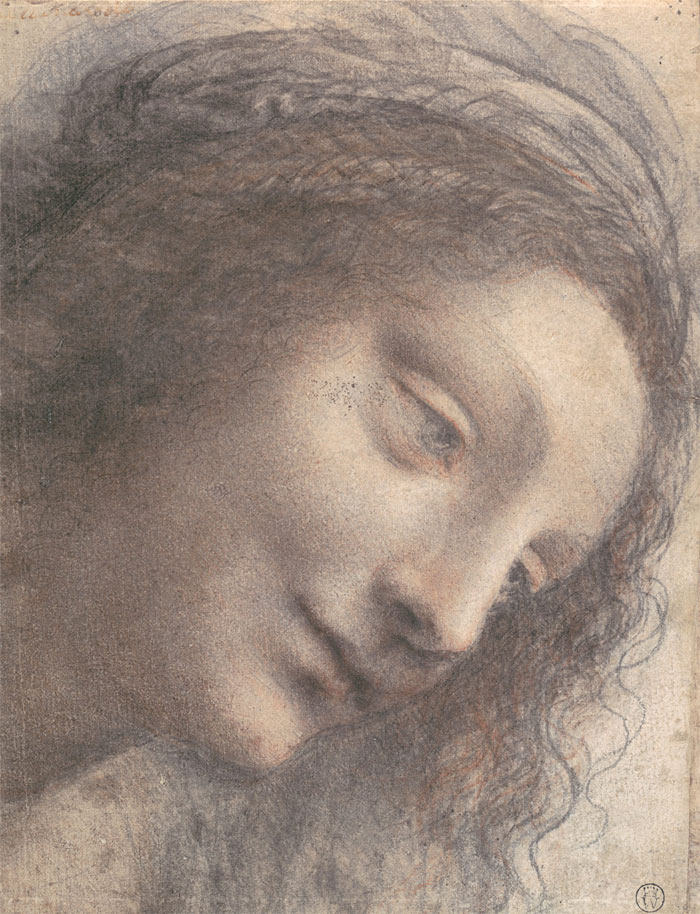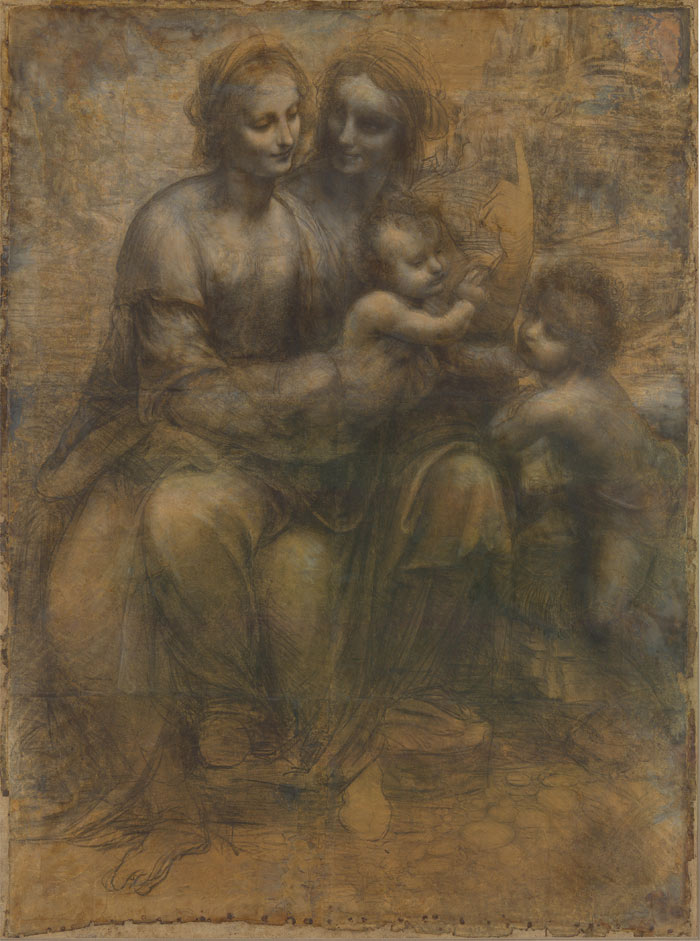What technique did Da Vinci use to depict smooth skin?

Question from Yasmin, Drawing Academy student
Dear Natalie and Vladimir,
Every time I see a drawing or painting made by Leonardo, I’m in awe of how he managed to achieve such smooth transitions in skin tone. I was wondering if you could shed some light on how he did that and what technique he used.
In this drawing, for example, I don’t see any traces of cross hatching.

My guess is he used charcoal on top of sanguine and then did lots of blending, but for me, these mediums always produce much harsher marks, and the transition between light and dark can never be so smooth. What was his secret?
Looking forward to your answer, and thank you in advance!
Hi Yasmin,
Many thanks for your question.
Yes, you guessed it right – charcoal and sanguine can be easily blended.
The “secret” of smooth transitions is applying very light pressure on sanguine or charcoal sticks, so they won’t leave harsh marks to begin with. Then such light marks can be blended using a stiff-bristle brush or a rag, for example. The process can be repeated several times layer by layer, gradually deepening tonal values.
Smudging sanguine with a piece of cloth takes a lot of medium off paper. With time, such cloth accumulates sanguine dust and can be used on its own to make very soft and smooth gradations.
For deeper tones, you may blend sanguine marks with a finger.
Also, when drawing on toned paper, it is easier to achieve smoother blending.

Keep in mind that in 500 years, some particles of charcoal dust are lost, so Leonardo’s drawings may look different from their original look.
I hope this helps.
Best regards,
Vladimir
To learn professional drawing techniques,
- Receive 15 new videos monthly (45 in total)
- Incredible discount – $4,164
- Bonuses - Fine Art eBooks and Videos
- Drawing Academy Diploma of Excellence after course completion in 3 months
- Personal coaching by Drawing Academy Tutors
- Lifetime membership. Free after the 3rd month
- Immediate access to all 45 video lessons
- Incredible discount – $4,198
- Bonuses - Fine Art eBooks and Videos
- Drawing Academy Diploma of Excellence after course completion in 3 months
- Personal coaching by Drawing Academy Tutors
- Lifetime membership. No more payments


Hi Vladimir,
I am intrigues by the discussion I observe about tonal transitions.
Surely this would depend on the skin tone and appearance of the subject sitter.
We can make assumptions about the sitters of Leonardo but we don’t know in fact. As an artist we can ‘cheat’ in our expression, do we want to pander to our model by making her/him appear more attractive than they are in fact, by smoothing a wrinkle or loosing a blemish.
I can think of Rembrandt whose skin was pitted and wrinkled as he aged, but I think he delighted in the realism of him self-expression. I also recall a then young ‘pommy’ woman I dated, who had a ‘peaches and cream’ complexion, which would have been a challenge to draw and paint. Then males who can be well endowed with body hair, I have found difficult to achieve an accurate representation at times.
Over to you.
Kind regards, Ernest Treagus.
As an artist, you have a “licence” to create your own vision of the world, solve your creative tasks and tell your message to viewers. This is what counts as an original and creative piece os art – your own take on the subject, your interpretation of reality.
However, if you want to compete with photo equipment, portraying every wrinkle, you would fail from beginning – any hi-res camera would do a better job than you. And where’s your creative take?